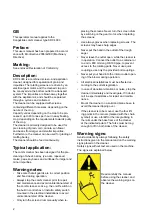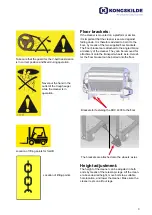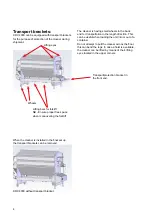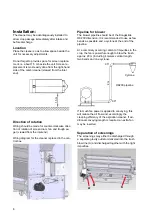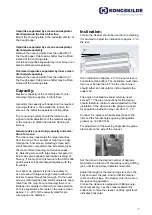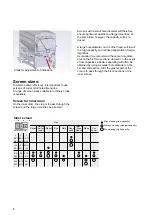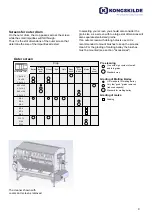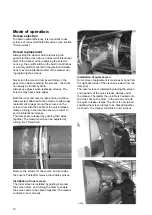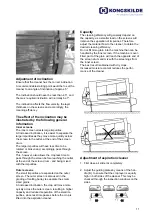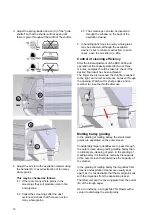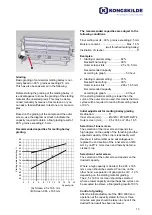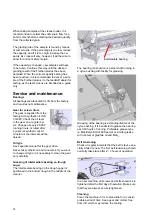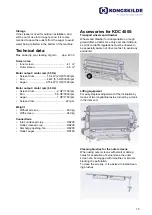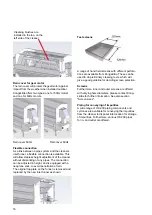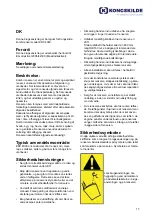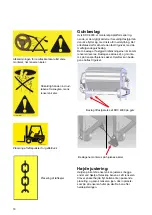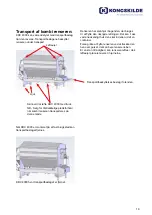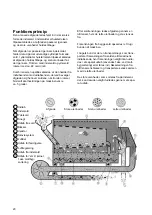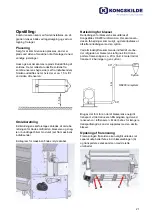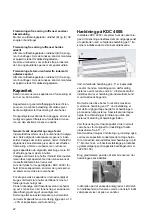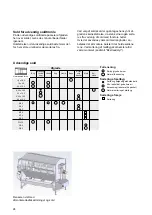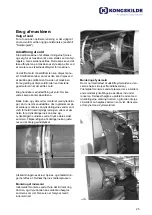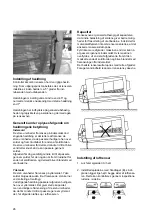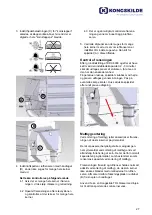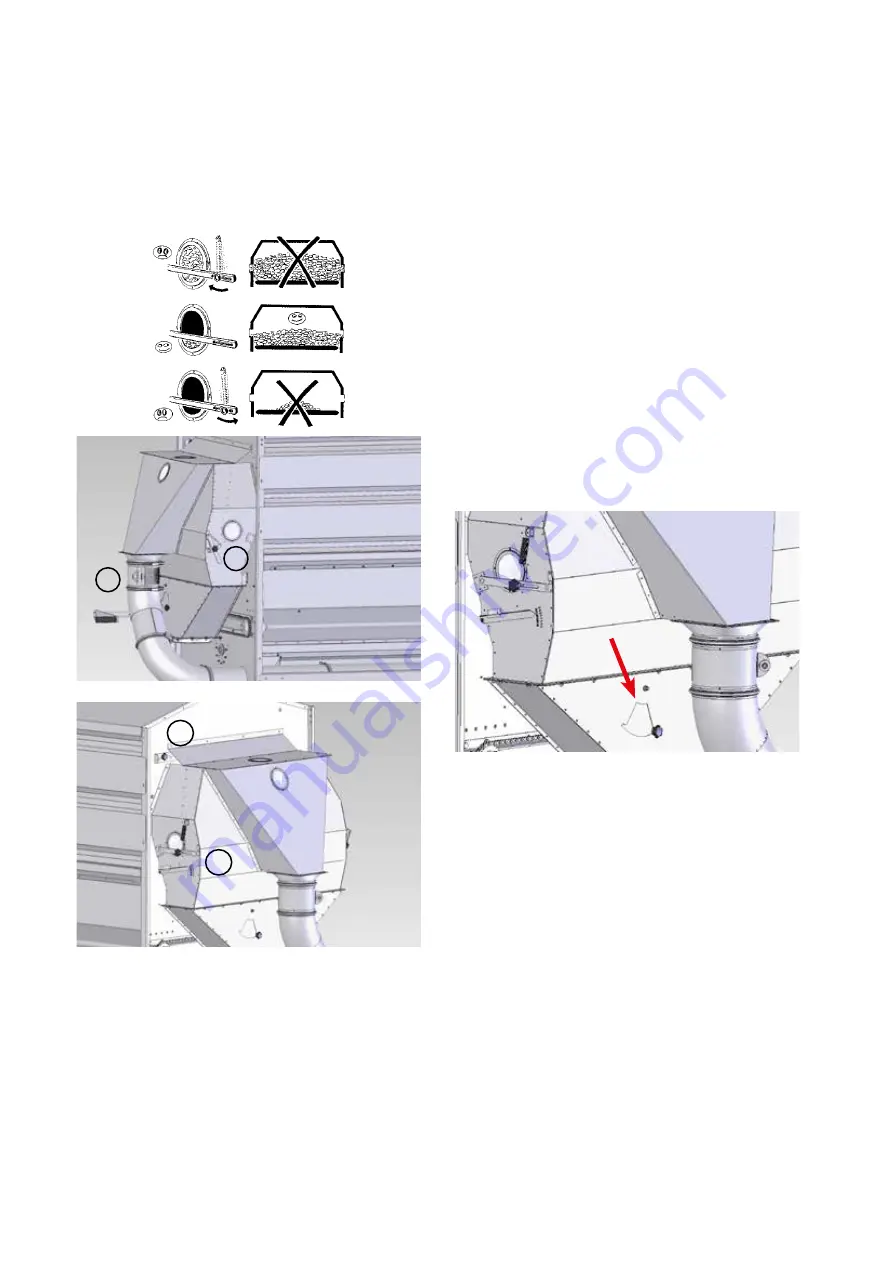
12
3. Adjust the spring-loaded device (C) of the "grain
shutter" so that the shutter will not open until
there is grain throughout the width of the shutter.
4. Adjust the air slot in the aspiration cleaner using
the handle (D), to avoid extraction of too many
whole grains.
This may be checked as follows
4.1 If there are many whole grains in the
screenings they will produce noise in fan
and pipeline.
4.2 Collect the screenings after the dust
cyclone and check that there are not too
many whole grains.
4.3 The screenings can also be inspected
through the window on the back of the
aspiration cleaner.
5. In handling light crops too many whole grains
may be extracted, although the aspiration
cleaner is set to minimum extraction. In such
cases, open the air slide (A) a little.
Control of cleaning efficiency
After the initial adjustment of the KDC 4000 and
operation at the capacity stated for two or three
minutes, samples should be taken to check if the
desired final result has been achieved.
The finger knob is loosened, the throttle is pushed
to the right, and a test sample can be taken through
the opening. Watch out for sharp edges, and re-
member to close the throttle after use.
Malting barley grading
In the grading of malting barley, the small-sized
grains are separated on the outer screen.
Considerably larger quantities are to pass through
the outer screen when grading malting barley than
in ordinary pre-cleaning of grain. In the grading of
malting barley it is therefore normally the capacity
of the outer screen that determines the capacity of
the cleaner.
In the grading of malting barley the impurities from
screens and aspiration cleaner are usually kept
apart, as it is not desirable that the small grains mix
with the impurities from the aspiration cleaner.
Therefore remove the covering plate from the outlet
(B) of the trough auger.
Use, for instance, a Kongskilde TRL blower with a
venturi to discharge the small grains.
B
C
D
A


